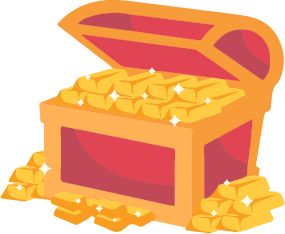B2.6 Determine the greatest common factor for a variety of whole numbers up to 144 and the lowest common multiple for two and three whole numbers.
Activity 1: Common Place (Lowest Common Multiple)
Materials
- metre stick (or ideally measuring wheel)
- cones

This activity takes place outside. Place a cone every metre up to about 45 metres (more if needed).
Scenario
To begin, choose three students to stand behind the first cone. Each student moves according to teacher instructions.
Give instructions to all the students in the class concerning the movement of the three chosen students.
- The 1st student stops at every second cone.
- The 2nd stops at every third cone.
- The 3rd at every fourth cone.
Ask them which cones the three students will stop at.
Note which cones the 1st , 2nd and 3rd student stops at.
- What do you notice?
- Will they stop at a common cone? Explain.
Repeat the exercise, changing the stopping points of the three students.
Question again so that students can answer this question:
- How do you predict which is the 1st stop (cone) in common? The 2nd? What does the 1st common stop represent?
Discuss students' strategies.
Additional Activities
Riddle A - Gold Bars
A pirate discovers a treasure chest. In this chest, there are less than 100 gold bars.
- If the pirate divides the gold bars into two equal parts, three equal parts, or five equal parts, there is a remainder.
If he divides the gold bars into seven equal parts, there is no remainder.
How many bars could there be in the treasure chest? - If the pirate divides the gold bars in the treasure chest:
- into two equal parts, one remains;
- into three equal parts, one remains;
- into five equal parts, one remains;
- into seven equal parts, there is no remainder.
- Exactly how many gold bars are in the treasure chest?

Riddle B - Number 1 Song
A new song is all the rage on the radio right now. The song "I Love Life, I Love Math!"
is topping the charts of several radio stations.
- At the CAC station, this song plays every 30 minutes.
At station CBB, it plays every 24 minutes. At 9:00 a.m., the song played at the same time on both radio stations.
At what time will this happen again? - At 9:00 a.m., CKC was also playing the same song; they play it every 9 minutes.
At what time will the song be played on all three radio stations at the same time?

Activity 2: Greatest Common Factor or GCF
Materials
- whiteboards
- erasable felt-tip pen
Divide the class into teams of three. Each student has a whiteboard and a felt-tip pen.
The object of the game is to find the greatest common factor (GCF).
One student writes two natural numbers less than 144 on their whiteboard. The other two students must use the strategy of their choice to find the GCF. The students share their strategy with each other. Alternate the roles of the team members.
After a few games, add a 3rd number. Ask students the strategies they used to choose their two, or three numbers.
Review the game as a class, making sure students understand how to find the greatest common factor (GCF). Suggestion: do the activity with the class by projecting three numbers on the board.
Variation: Do the same activity with the lowest common multiple (LCM) for two or three natural numbers.
